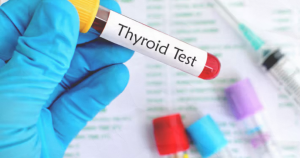
The Modern Pain Relief Playbook
Chronic pain is a pervasive, complex health issue that undermines quality of life, mobility, mental health, and everyday functioning. Whether driven by arthritis, degenerative spine conditions, musculoskeletal injuries, fibromyalgia, or osteoporosis, patients increasingly seek non-surgical pain relief as a first-line, evidence-based strategy.
At Wellgen Health, we believe successful chronic pain care requires a multimodal playbook — combining physical therapies, targeted interventional procedures, osteoporosis care, lifestyle modification, and ongoing monitoring. This article explains the modern approach to pain relief, tailored to patients across the Dallas–Fort Worth / North Texas region (including Dallas, Canton, Mesquite, Greenville, and Arlington).
Why a Multimodal Strategy Matters
Pain is not simply tissue damage — it’s a biological and behavioral experience shaped by structural, inflammatory, neuromuscular, and psychosocial factors. When care is fragmented (medication alone, therapy alone, or procedures alone), outcomes are often limited. A multimodal strategy:
- Targets multiple pain pathways — nociceptive, neuropathic, and central sensitization — simultaneously.
- Reduces reliance on high-dose medications or repeat procedures, lowering side effects and risk.
- Promotes functional recovery, not just symptom suppression, so patients can return to work, family life, and activity.
- Empowers patients with education, pacing, and self-management tools that sustain gains.
Wellgen’s Chronic Pain Management services integrate rehabilitation, intervention, and bone health to deliver sustainable, non-surgical outcomes.
Key Pillars of the Modern Pain Relief Playbook
- Comprehensive Assessment & Stratification
- Physical & Rehabilitation Therapies
- Interventional Pain Procedures
- Pharmacologic & Adjunctive Support
- Bone Health & Osteoporosis Care
- Lifestyle, Nutrition & Behavioral Medicine
- Monitoring, Feedback & Adaptive Planning
Each pillar is essential — together they form a cohesive strategy for long-term relief.
1. Comprehensive Assessment & Stratification
Before treatment begins, a detailed evaluation is critical. At Wellgen clinics across Dallas, Canton, Mesquite, Greenville, and Arlington, our intake typically includes:
- History & physical exam: onset, aggravating/relieving factors, comorbidities, prior treatments.
- Red-flag screening: to rule out urgent surgical pathology (infection, tumor, progressive neurological loss).
- Imaging and diagnostics: X-rays, MRI, and importantly DEXA scans when osteoporosis is suspected.
- Pain phenotyping: determining whether pain is predominantly nociceptive (mechanical), inflammatory, neuropathic, or mixed.
- Psychosocial assessment: depression, anxiety, sleep disruption, catastrophizing, occupational factors.
- Functional baseline metrics: range of motion, strength, gait, and activity limitations.
Accurate stratification helps clinicians select the right combination and intensity of therapies. For example, mild osteoarthritis with early bone thinning may be best served by aggressive rehabilitation and bone-preserving treatments, whereas advanced degenerative spine disease with central sensitization might require interventional neuromodulation combined with cognitive behavioral therapy.
2. Physical & Rehabilitation Therapies
Therapeutic rehabilitation provides the foundation for non-surgical recovery. Rehabilitation reduces pain, restores movement, and prevents recurrence.
a. Therapeutic Exercise & Movement
- Strength training to offload joints and stabilize the spine.
- Flexibility and stretching for arthritic or stiff joints.
- Aerobic conditioning (low-impact walking, cycling, aquatics) to increase pain thresholds and cardiovascular health.
- Motor control & core stability training for back and neck pain.
Programs are graded and progressive, individualized to each patient’s baseline and comorbidities.
b. Manual & Soft-Tissue Therapies
- Joint mobilization, soft-tissue massage, myofascial release, and instrument-assisted soft-tissue mobilization (IASTM).
- Dry needling or trigger-point release for myofascial pain.
- Therapeutic ultrasound or shockwave in selected tendon and enthesopathy cases.
c. Modalities & Adjunct Technologies
- TENS (Transcutaneous Electrical Nerve Stimulation) and NMES (Neuromuscular Electrical Stimulation).
- Laser therapy, cryotherapy, and heat modalities to enable active participation in therapy.
d. Aquatic Therapy & Graded Hydrotherapy
Water supports early movement, reduces joint loading, and speeds safe progression — ideal for patients in pain who can’t tolerate land-based exercise.
e. Rehabilitation for Fibromyalgia & Widespread Pain
For fibromyalgia treatment, graded aerobic and resistance training under supervision is proven to reduce pain and improve function. The focus is on gentle progression, activity pacing, and neuroplastic retraining rather than pushing through pain.
Explore Wellgen’s musculoskeletal and arthritis care for local services.
3. Interventional Pain Procedures
When conservative care plateaus or specific pain generators are identified, targeted interventions can provide rapid relief and a window for rehabilitation.
a. Nerve Blocks & Injections
- Intra-articular injections (steroids, hyaluronic acid) for arthritic joints.
- Periarticular injections for bursitis and tendon sheath inflammation.
- Facet joint injections / medial branch blocks for suspected facetogenic back pain.
- Sacroiliac (SI) joint injections and peripheral nerve blocks for localized sources.
These interventions reduce inflammation and pain and can accelerate engagement in therapy
b. Radiofrequency Ablation (RFA)
RFA of medial branches or dorsal rami offers durable relief for facet-mediated spinal pain, often lasting months and enabling functional gains.
c. Epidural Steroid Injections
Interlaminar or transforaminal epidurals reduce nerve root inflammation for radicular pain (e.g., sciatica), buying time for rehabilitation or healing.
d. Neuromodulation: Spinal Cord & Peripheral Nerve Stimulation
For refractory neuropathic pain or failed-back pain, spinal cord stimulation or peripheral nerve stimulation modulates pain signaling at the spinal or peripheral level.
e. Regenerative Injection Therapies
- PRP (Platelet-Rich Plasma) and selected stem-cell approaches may stimulate tissue repair in tendons, ligaments, and early joint degeneration when combined with rehab.
Prolotherapy for ligamentous laxity may be appropriate in select patients.
f. Vertebroplasty / Kyphoplasty
In osteoporotic vertebral compression fractures, these procedures can restore height, stabilize the vertebra, and provide immediate pain relief — facilitating participation in strengthening programs.
Timing matters: interventions should complement rehabilitation rather than replace it, with the shared goal of long-term functional recovery.
4. Pharmacologic & Adjunctive Support
Medication remains a useful adjunct, but it should be part of an integrated plan rather than the central strategy.
- NSAIDs and acetaminophen for acute inflammatory pain (used judiciously considering side effects).
- Topical analgesics (capsaicin, lidocaine) for localized pain with fewer systemic effects.
- Neuropathic agents (gabapentinoids, SNRIs, TCAs) when neuropathic pain is present or central sensitization is suspected.
- Short-term muscle relaxants for spasm-related discomfort.
- Opioids reserved strictly for selected, closely monitored circumstances.
- Adjunct infusions (e.g., low-dose ketamine) in specialized cases under supervision.
- Pain psychology (CBT, acceptance-based therapies) to reframe pain perception and improve coping.
Medication should be used to enable therapy and regain function — not as a long-term standalone solution.
5. Bone Health & Osteoporosis Care — The Critical, Overlooked Pillar
Compromised bone health is frequently underrecognized as a chronic pain driver. Osteoporosis increases risk for microfractures and vertebral compression fractures — potent sources of disability and pain.
a. Screening & Diagnosis
- DEXA scan for those at risk (postmenopausal women, men over 70, long-term corticosteroid users).
- Laboratory bone markers and assessment of secondary causes (thyroid dysfunction, renal disease, vitamin D deficiency).
b. Pharmacologic Bone Therapies
- Bisphosphonates (alendronate, risedronate)
- Denosumab, SERMs, PTH analogs, and anabolic agents when appropriate
- Calcium and vitamin D supplementation
These measures reduce fracture risk and microdamage that can fuel chronic pain.
c. Nutrition, Supplementation & Lifestyle
- Adequate protein, calcium, and vitamin D intake.
- Weight-bearing and resistance exercise to promote bone remodeling.
Fall prevention strategies and balance training to avoid fractures.
d. Management of Vertebral Fractures
- Bracing and controlled mobilization, analgesic bridging, and when indicated, vertebroplasty/kyphoplasty, followed by targeted rehabilitation to restore posture and paraspinal strength.
Addressing bone health breaks the cycle of fracture → immobility → deconditioning → more pain.
6. Lifestyle, Nutrition & Behavioral Medicine
Long-term pain relief depends on patient engagement in daily life.
a. Sleep Optimization
Sleep disturbance raises pain sensitivity. Interventions include sleep hygiene, CBT for insomnia, and targeted therapies.
b. Weight Management & Body Composition
Even modest weight loss reduces joint load and improves mechanical pain.
c. Anti-Inflammatory Nutrition
A whole-foods diet rich in omega-3s and antioxidants can dampen systemic inflammation.
d. Stress Management & Mind-Body Methods
Mindfulness, meditation, yoga, tai chi, biofeedback, and psychotherapy reduce central sensitization and catastrophizing.
e. Activity Pacing & Self-Management
Patients learn pacing, graded activity, and goal-setting to avoid boom-and-bust cycles. Tools like pain journals and activity planning foster autonomy and resilience.
7. Monitoring, Feedback & Adaptive Planning
Chronic pain care must be iterative. Wellgen uses data-driven monitoring — pain scales, functional tests, imaging where appropriate — with periodic multidisciplinary reviews. If a patient plateaus, the plan adapts: intensifying a therapy, adding a targeted intervention, or pivoting to neuromodulation. This responsiveness ensures the care pathway evolves with the patient.
Applying the Playbook to Fibromyalgia and Complex Conditions
Fibromyalgia treatment exemplifies why a multimodal approach matters. Fibromyalgia is characterized by widespread pain, fatigue, sleep disturbance, and central sensitization. Successful care includes:
- Graded aerobic and resistance exercise under supervision.
- CBT and pain education to modify maladaptive beliefs.
- Neuromodulation (TENS, nerve stimulation) and sleep optimization.
- Pharmacologic agents (SNRIs, gabapentinoids) targeted at central pain mechanisms.
- Lifestyle and nutritional support to improve energy and reduce inflammation.
- Bone health screening where indicated to rule out comorbid osteopenia or osteoporosis.
Wellgen’s integrated model is ideally suited to fibromyalgia and other complex pain syndromes — focusing on function, resilience, and realistic recovery goals rather than chasing elusive “cures.”
Why Choose Wellgen for Non-Surgical Pain Relief in North Texas
Wellgen delivers an integrated, patient-first approach across Dallas, Canton, Mesquite, Greenville, and Arlington. Our strengths include:
- Coordinated multidisciplinary teams: rehabilitation therapists, interventional pain physicians, bone health specialists, and mental-health providers working together.
- Evidence-based, non-surgical focus tailored to local patient needs.
- Advanced interventional and regenerative options when clinically indicated.
- Comprehensive osteoporosis care to remove a hidden source of pain and disability.
- Emphasis on long-term function, monitoring, and prevention rather than short-term symptom suppression.
Learn more about our chronic pain and musculoskeletal services here:
Practical Next Steps for Patients in Dallas / North Texas
If you’re in Dallas, Canton, Mesquite, Greenville, or Arlington and struggling with chronic pain, consider these initial steps:
- Get a comprehensive assessment that includes functional testing and bone health screening.
- Start a graded, supervised rehabilitation program to restore movement and reduce reliance on medication.
- Consider targeted interventional options if pain limits rehabilitation progress.
- Screen for osteoporosis if you are at risk — treating bone loss prevents fractures and chronic pain acceleration.
- Adopt lifestyle changes (sleep, diet, pacing, stress reduction) to sustain improvements.
Conclusion: A Modern, Practical Playbook for Lasting Relief
Chronic pain, arthritis, fibromyalgia, and osteoporosis are not problems solved by a single pill or a single procedure. They require a modern playbook that blends assessment, rehabilitation, precision interventions, bone health, behavioral medicine, and continuous adaptation. Wellgen’s integrated model offers exactly that—practical pathways to non-surgical pain relief across the Dallas–Fort Worth / North Texas region.
If you’re seeking effective, evidence-based care for chronic pain or complex conditions like fibromyalgia, explore Wellgen’s services and schedule a comprehensive evaluation to begin your recovery journey.




